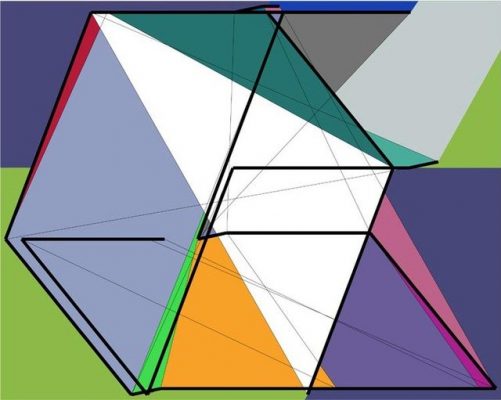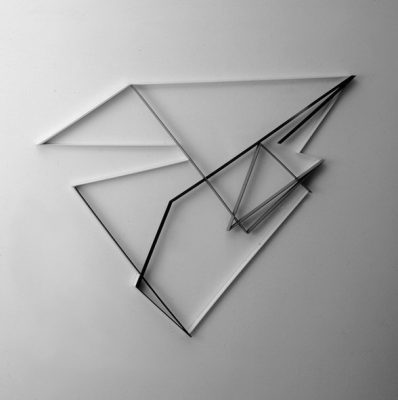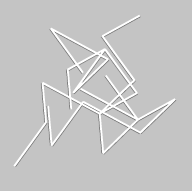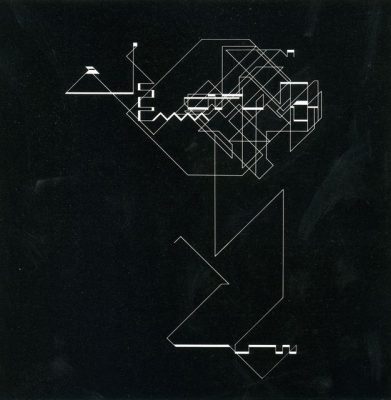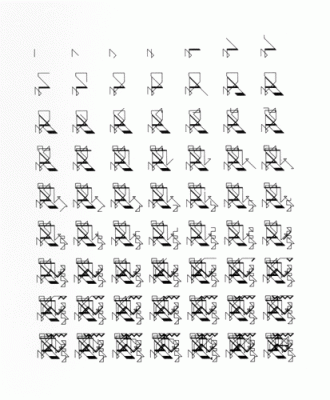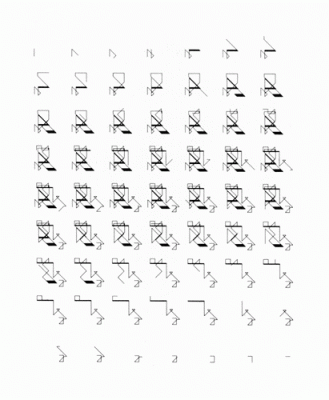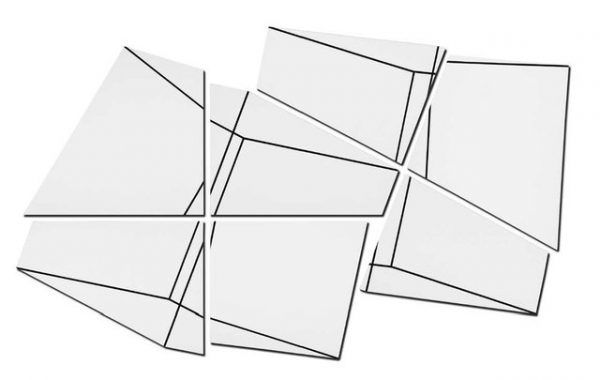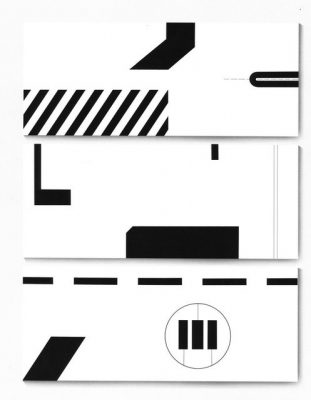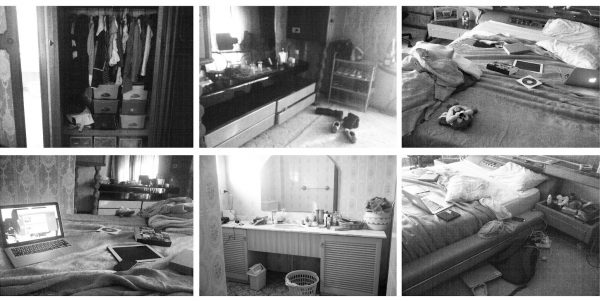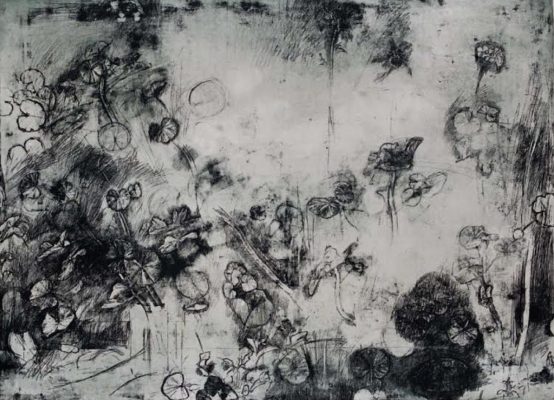Lines of varying thickness rotate on black. On the screen beside, tilted away from the first, is a slide show, a still image from the moving one every ten seconds. This is not a video work; generated in real time, the digital image doesn’t run on a loop. It could go on forever.
P-1271 series, 2006-2007
Manfred Mohr’s solo exhibition at Carroll/Fletcher, his first in London, is presented as a concise survey of fifty years of practice. Logics run off each other; visualisations generated by an algorithm determine the maximum limits of a printed panel on the opposite wall; signs from an alphabet are drafted onto each other and scaled up, made manifest in lacquered steel, and fixed to the wall.
Mohr was living and working in Paris in the 1960s, where he started making generative drawings at The Meteorological Institute (he has lived in New York since 1981). At the time only scientists and mathematicians had access to new computer technologies. At issue now is the ubiquity of computer technology. There’s been a lot of discussion around the New Aesthetic over the past year or so; the technological mistake evidences our new way of seeing. No longer hidden away in research institutions, the computer is now embedded in our working lives, our means of communication and making. In the 1960s computer technology belonged to military research; its use signaled the corruption of art.
Mohr’s website details various ‘work phases’. Some are paradigms of post-war art: action painting, use of black and white, geometric experiments, hard edge painting, colour. Others seem betray a commitment to science and mathematics: systematisation of picture content, sequential computer drawings, fixed structures, 4-D hypercube, graph theory, dissection of cube, quasi-organic growth programs on the cube, 6-D hypercube. It occurs to me that the language of art is just as peculiar as that of science. It’s clear these terms stand in for large bodies of work, work as in labour, learning, but also working out, working through. It is only when I meet Mohr that I realise this is a peculiar language all of his own.
Cubic Limit, 1973
